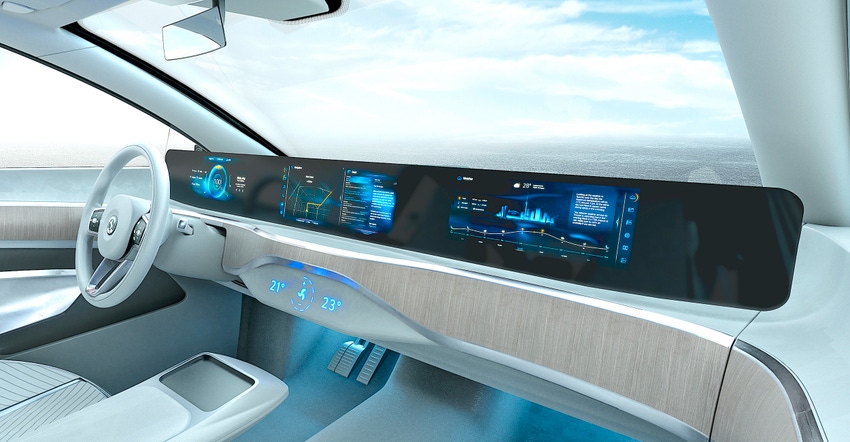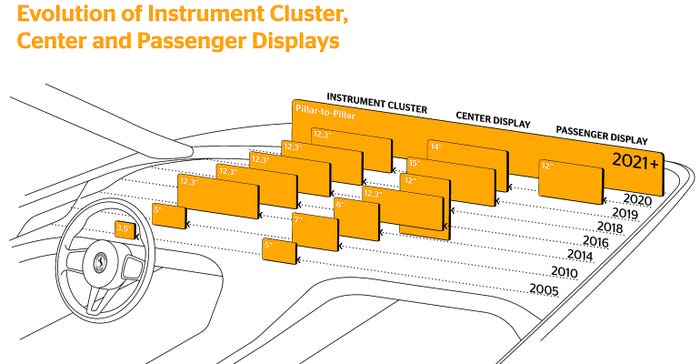Continental’s dashboard-spanning display is slated for production in 2024.

Continental is declaring the demise of the traditional discrete instrument panel, with its familiar speedometer, tachometer, and fuel gauge. Instead, the company is gunning for displays providing all that information and more in panels that replace most of the dashboards in today’s cars.
This isn’t just hyperbole; Continental says the company has a firm order for these displays from “a well-known global vehicle manufacturer,” for production in 2024. This will combine driver-centric information with infotainment and front passenger-focused information. Potential content includes navigation, warning signs, movies, news, social networks, office applications, or booking apps to plan the route, displayed across the entire width of the cockpit.
“A driving experience that is digital and safe is becoming the most distinctive feature of modern cars,” said Jens Brandt, Head of Human Machine Interface, Continental North America. “The size of the displays and their intuitive operation play a central role here.”
Indeed, Brandt is prepared to declare a shift in customer focus from what’s under the hood to what’s on the dashboard. “While horsepower used to be the gold standard for vehicle differentiation, now it is screen diagonals and user experience,” he declared. Maybe, but it doesn’t have the ring of “That thang got a Hemi innit?”
But information is more important to today’s driver, Brand insists. “With the increasing significance of automated driving, the way in which we spend our time in cars is becoming even more important. As a result, there is also a growing need for solutions and services for the in-vehicle user experience.”

But dashboards aren’t always flat panels, which complicates the installation of such large displays. This will require a variety of solutions, from flat displays to curved displays that fit seamlessly into the cockpit, and even V-, C-, L- or S-shaped displays. The aim is to accommodate both the driver and the front passenger so that they can both reach the screen with minimum effort.
Also, there is the small matter of the fact that nobody builds automotive display screens that are as wide as the cars they go in. The solution is to invisibly stitch together multiple display panels so that they provide the appearance of a single device. The necessary invisible transitions are not the only crucial detail here. There are also occupant sensors and cameras recording driver behavior that need to be seamlessly integrated.
Of course, these huge digital displays require a correspondingly huge volume of digital data to run them, so Continental is also addressing the vehicle electronics architecture with concepts such as the high-performance computer for the cockpit. The aim is to have a few high-performance computers replace the current large number of dedicated control units in the future, so the jumbo-sized pillar-to-pillar display that replaces multiple devices is a visible metaphor for the consolidation of numerous processors into this new paradigm of fewer, more all-encompassing computers.
About the Author(s)
You May Also Like





